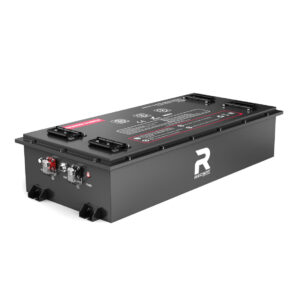What Are the Signs That an RV Deep Cycle Battery Needs Replacement?
An RV deep cycle battery needs replacement if it shows reduced capacity, struggles to hold a charge, has swollen or cracked casing, leaks acid, or exhibits voltage drops below 10.5V under load. Frequent need for watering, corrosion on terminals, and age over 3-5 years also signal replacement. Regular testing with a multimeter confirms degradation.
Typical Lifespan of RV Batteries
How Can Voltage Checks Indicate Battery Health?
Voltage checks using a multimeter reveal a battery’s state of charge. A fully charged 12V battery should read 12.7V or higher. If it drops below 12.4V at rest or under 10.5V under load, the battery is failing. Consistent low voltage after charging indicates sulfation or internal damage, requiring replacement.

For accurate readings, test voltage 4-6 hours after disconnecting from charging sources. Temperature affects measurements – add 0.1V for every 10°F above 80°F and subtract when colder. Create a voltage log to track trends over time. This table shows typical voltage states:
| Voltage | State of Charge | Action Required |
|---|---|---|
| 12.7V+ | 100% | Normal operation |
| 12.4V | 75% | Recharge needed |
| 12.2V | 50% | Potential damage risk |
What Environmental Factors Accelerate Battery Wear?
High temperatures increase chemical activity, causing faster water loss and plate corrosion. Freezing temperatures thicken electrolyte, raising internal resistance. Vibration from rough roads loosens internal components. Install batteries in insulated compartments, secure them with padded brackets, and avoid parking in direct sunlight to minimize environmental stress.
RV Battery Water Level Check Frequency
Coastal environments introduce salt corrosion – apply dielectric grease to terminals monthly. At 95°F, battery life halves compared to 77°F operation. Use thermal wraps in extreme climates. Below 32°F, capacity drops 20-50% depending on discharge rate. This comparison shows temperature impacts:
| Temperature Range | Effect on Capacity | Lifespan Impact |
|---|---|---|
| 77°F (25°C) | 100% capacity | 3-5 years |
| 95°F (35°C) | 85% capacity | 1.5-2 years |
| 32°F (0°C) | 60-80% capacity | Increased sulfation |
“RV owners often overlook voltage testing until appliances fail. A battery showing 12.2V might power lights but collapse under inverter load. Use a load tester for accurate health checks. Also, pairing batteries with mismatched ages or brands causes uneven charging – replace all batteries in a bank simultaneously.”
— Redway Power Solutions Lead Engineer
FAQ
- Can a dead RV battery be revived?
- Temporary recovery is possible via equalization charging or desulfation devices, but permanent capacity loss usually remains. Replacement is more cost-effective long-term.
- How often should I test my RV battery?
- Monthly voltage checks and annual load testing are ideal. Test before and after long trips.
- Are lithium RV batteries worth the higher cost?
- Yes – they last 8-10 years, charge faster, and provide stable voltage, making them cost-efficient despite higher upfront prices.
